On July 6, 2025, in Nanjing, China, a construction worker plunged onto a steel rod that pierced him from pelvis to chest. That night, doctors fought millimeter by millimeter through a five-hour battle against death.
The call at midnight
The phone’s shriek tore through the heavy summer silence just after midnight.
Professor Ji Zhenling, president of Nanjing Jiangbei Hospital, surfaced from sleep, the warmth of his pillowcase still pressed against his cheek. His hand found the phone in the dark.
“A man fell from scaffolding about three or four floors high,” came the urgent voice. “A steel rod (3 centimeters thick) has pierced him, from pelvis to chest. He’s in the emergency room now.”
Ji was already moving, the echoes of the operating room flashing in his mind: the relentless beeping of monitors, the rhythmic whoosh of the ventilator, and the dull scuff of rubber soles on the hospital floor. He could smell it already: the sharp sting of iodine mingling with blood. He knew death was already in the building, waiting.
He pulled on his clothes and slipped into the car. The engine roared to life, shattering the city’s uneasy sleep, and his heartbeat rose to match its fury. Once more, the night was calling him into a race with death.
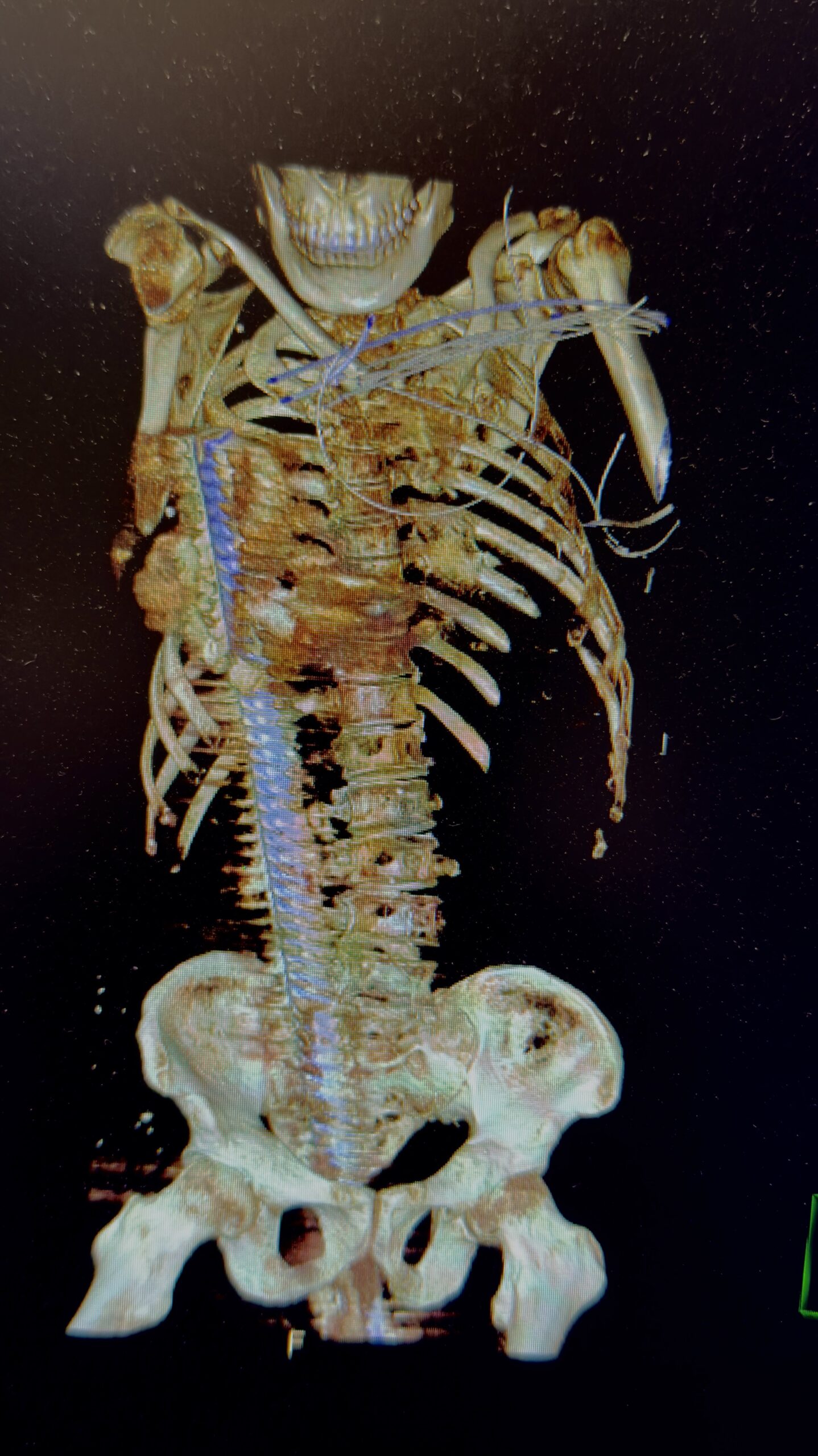
CT/3D reconstruction shows the rod’s path through pelvis, abdomen, and chest, pressing major vessels like charges in a minefield.
The fall
At around 10 p.m., a scream tore through the humid outskirts of Nanjing: sharp, desperate, then silence.
Zhang, a construction worker, missed his footing. His body hit the ground with brutal finality, but the fall didn’t end there. An upright, ribbed steel rod, thick as a man’s thumb, met him. It pierced his pelvis and vanished upward, a grotesque exclamation mark on the night.
His coworkers arrived to a nightmare. Zhang was pinned fast by the steel, his body offered up like a sacrifice to the night. His breaths came ragged and wet, iron flooding his mouth. His face was twisted in agony, and his clothes were plastered to him with sweat and blood.
The paramedics spoke no words. They shared a single glance. The trajectory was all wrong: the rod disappeared into his lower body and reemerged beneath his right armpit, as if his torso were nothing but a sheath.
There was no protocol, no checklist, only speed.
Sparks lit the dark as they sawed through the rod 15 centimeters from his skin, leaving most of its cold length buried inside him. IV access was secured, fluids were administered, and the ambulance screamed into the night, cutting a path through the darkness. Another race against death was underway.
The council of war
When Ji pushed into the emergency ward, the smell hit him first, a sharp blend of disinfectant and blood. Heads lifted. Dozens of eyes turned toward him, charged with a desperate, wordless plea.
A CT technician beckoned him to the glowing screen. The image was a map of disaster: a steel rod cutting straight through the man’s core, grazing the aorta, skimming the vena cava, and pressing against the liver. It looked less like an injury than a lit fuse.
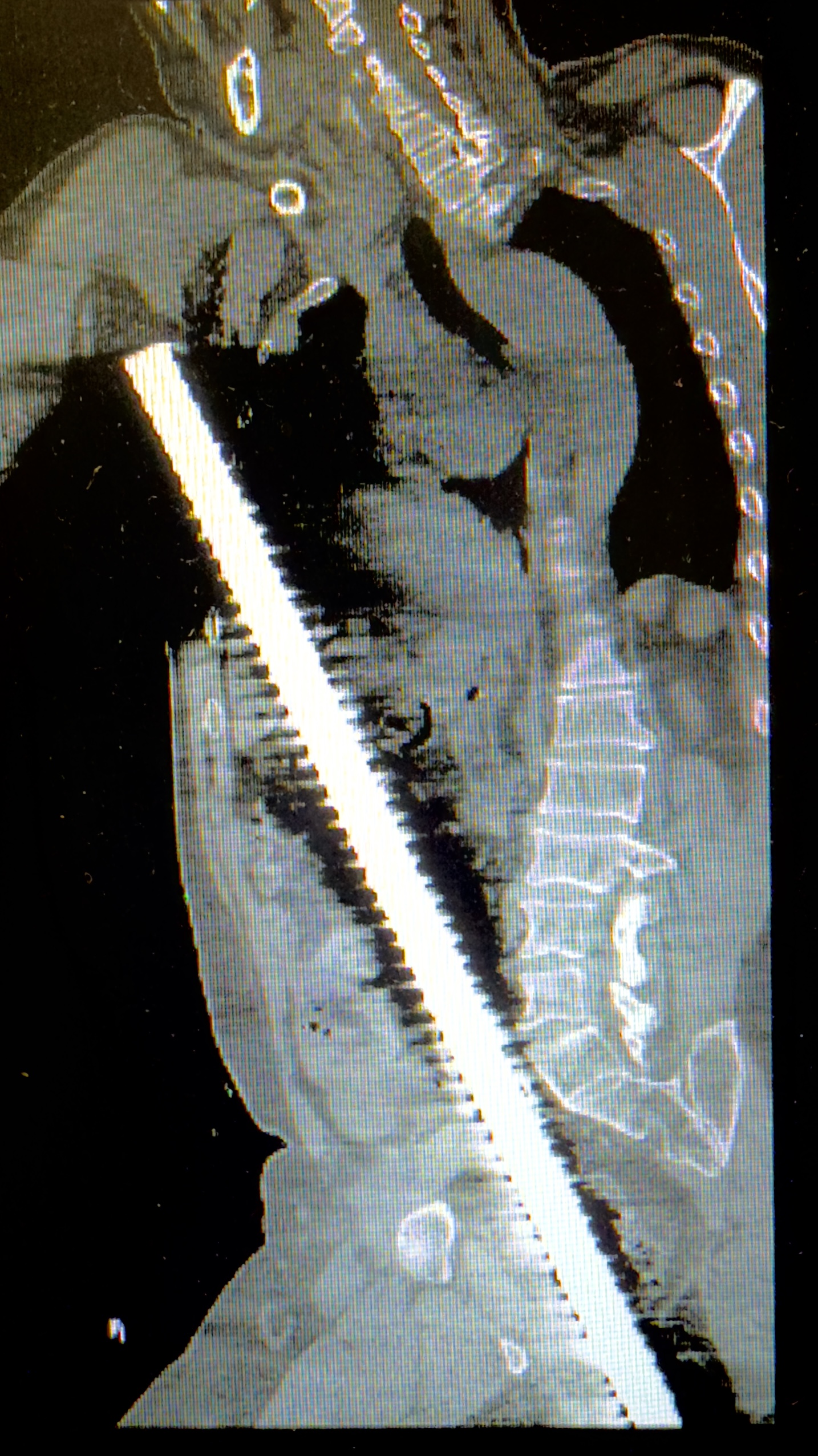
CT scan shows the steel rod piercing upward through his torso, its trajectory dangerously close to major vessels.
“Summon everyone,” Ji said, his voice steady, an order carved into the urgency of the moment.
Within minutes, the ward was alive with motion. General surgeons, anesthesiologists, cardiothoracic specialists, orthopedists, and urologists. One by one, they assembled. A war council gathering around a body that had become a battlefield.
On the table, the patient lay intubated, his chest already drained. A cardiovascular surgeon stood at attention, waiting for the worst: the possibility that the steel had torn a great vessel, and that a single wrong move would turn the body into a deluge no human power could contain.
Ji tied his mask and pulled it over his face. His eyes, above the blue fabric, were sharp as a scalpel.
“Remember,” he told the room, “This is not surgery; this is bomb disposal. We move in millimeters, not centimeters.”
The minefield
A reverent hush fell as they began. The rod had carved a savage tunnel. It entered through the pelvis, ravaged the abdomen, punched through the diaphragm, and invaded the chest, finally coming to rest beneath the right armpit. It was a geography of pure violence. Any one of these injuries could have been fatal. Together, they formed an impossible gauntlet.
There was no textbook step-by-step, no standard procedure. Only first principles remained: Clear what contamination they could, stem the bleeding while protecting vital flow, and salvage whatever organs still had a chance.
“Decontamination first,” Ji instructed, his voice soft but absolute. The abdominal cavity was rinsed with sterile saline. Suction tubes hummed as fecal leakage was evacuated. Areas of ruptured bowel were sutured shut, each stitch a fragile barricade against infection.
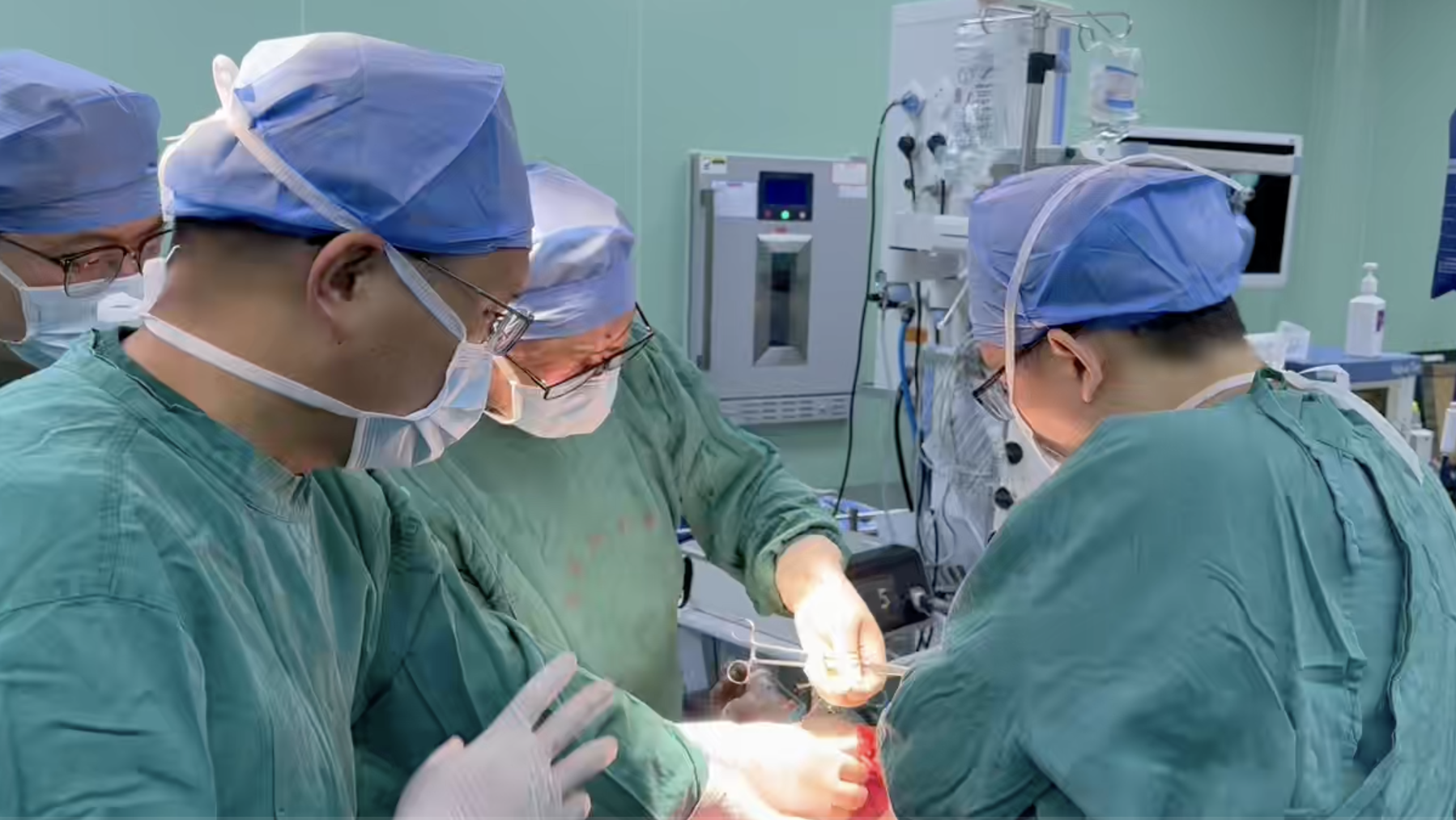
Under the harsh lights, surgeons stitched the ruptured bowel, each suture a fragile barricade against chaos.
Then the team’s attention turned to the true minefield: the unforgiving steel rod, nestled against the body’s most vital vessels: the aorta, inferior vena cava, iliac vessels, and portal vein of the liver. The steel was an uninvited guest pressed against the very pillars of life. Scalpels moved with the precision of watchmakers, teasing apart tissue micron by micron. Everyone knew that if the rod had already nicked a vessel, the slightest movement could unleash a torrent beyond control.
The battle of millimeters
Under the blinding surgical lights, the exposed end of the rod gleamed with cold indifference.
Deputy director Xu gripped it with both gloved hands, feeling the rough ridges through the thin barrier of latex.
“Slowly,” Ji commanded. His voice was the only anchor in the suffocating silence.
The ventilator hissed. The monitor beeped. Every gaze fixed on Xu’s hands as he rotated the rod (a cautious half-turn) then eased it back a single millimeter. A thin trickle of blood slid into the suction tube.
The room froze.
No torrent. No catastrophe.
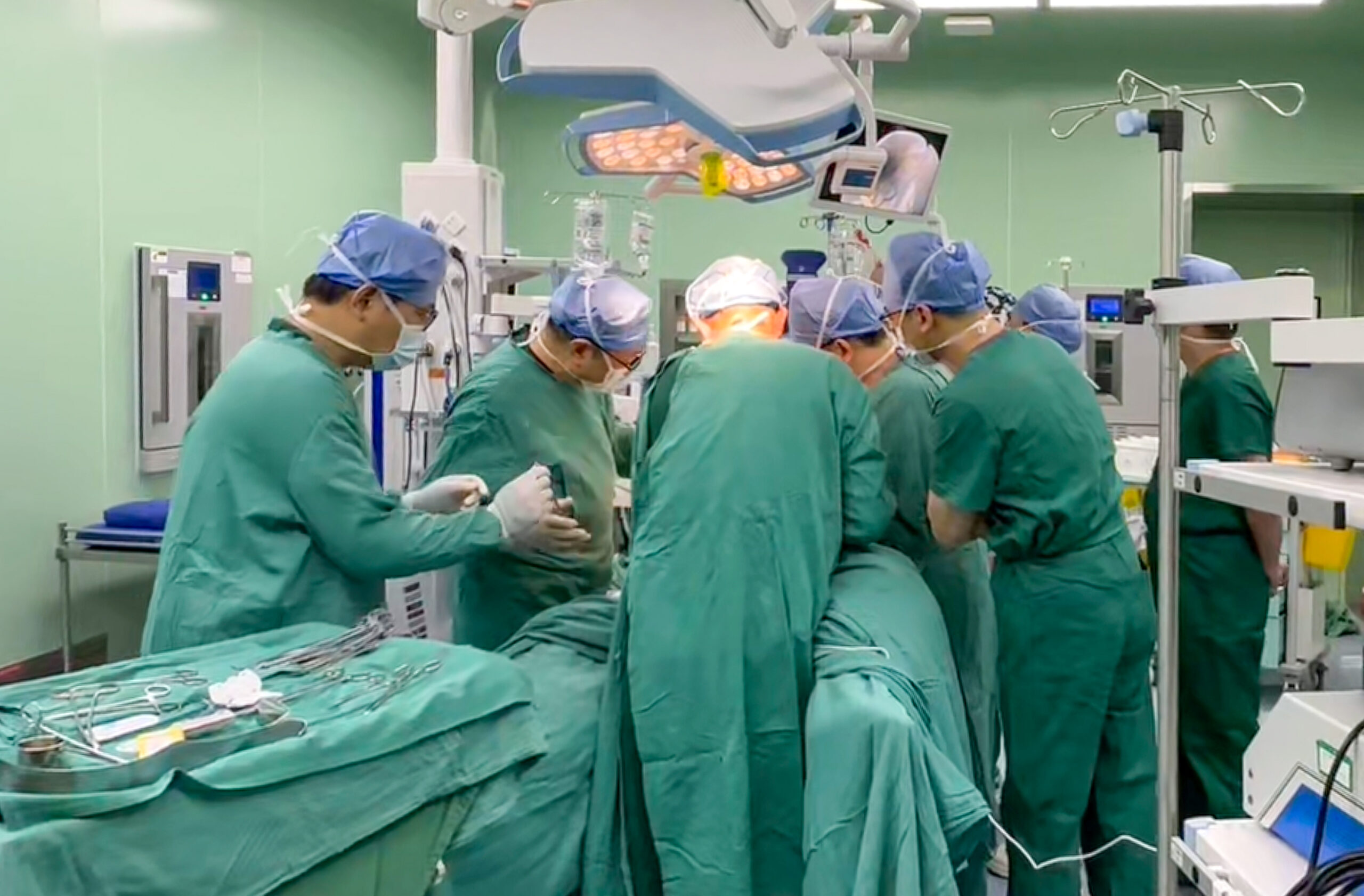
Under the surgical lights, the team works with millimeter precision, as if defusing a live minefield hidden inside the body.
Minutes stretched into eternity. Sweat beaded on brows, traced down temples, stung eyes, and vanished into masks. The air grew heavy with the acrid sting of cauterized flesh.
For 40 endless minutes, the ritual repeated itself: a fractional turn, a microscopic retreat, a breath held as though the entire room were bound in the same silent prayer. Time itself seemed to dilate, each second honed to a blade, cutting into the nerves of everyone present. The odor of burned flesh lingered like an unspoken omen.
Then, suddenly, the resistance gave way. The rod came free.
Its weight was astonishing in Xu’s hands, as though he had hauled up a relic from the underworld. When he laid it upon the stainless steel stand, it struck with a brutal, resonant clang, reverberating through the stillness like the final sealing of a vault door.
For a suspended instant, no one moved. Breath caught, shoulders rigid, and the silence almost holy. Then came the collective exhale: a rush of air, the collapse of tension, the heartbeat of the room resuming its course. A nervous laugh trembled through the masks.
The bomb had been defused. Death, for this night, denied.
The dawn
Nearly five hours after it began, it was over. Ji stepped out of the OR. Dawn had broken, washing the world in pale, new light.
He peeled off his mask, the elastic carving red grooves into his cheeks. His scrubs clung heavy with sweat. Down the hall, a nurse wheeled away the culprit on a cart: a sinister, ribbed steel bar, 80 centimeters long and 3 centimeters thick. A relic of a night staring into the abyss.

The “ugly relic” itself: a ribbed steel bar, 80 centimeters long and 3 centimeters thick, the object that turned one man’s body into a minefield.
Outside, the sky was clear, with the clouds scattered like fresh linen. Ji leaned against the wall, allowing himself a single, quiet thought: He’s alive.
For Ji, this night blurred into a hundred others: the midnight call, the frantic drive, the battle measured in heartbeats and millimeters. Yet each was singular. Behind every case number was a universe of fear, hope, and a life dangling over the abyss, a family waiting in the dim corridor.
“I don’t think of myself as a hero,” he would say later, the drama of the night faded into the calm of day: “I think of myself as a craftsman. With steady hands, working against chaos, entrusted with the most fragile material of all: human life.”
There will always be nights when death presses its face against the glass, patient, waiting for a single mistake.
And there will always be those who stand between it and us (doctors like Ji and his team), trading sleep and safety for the fragile, miraculous, and chance of another sunrise.
In the end, what remained was not the memory of cold steel or the acrid sting of burned flesh, but the sound, faint yet steady, of a man breathing on his own.
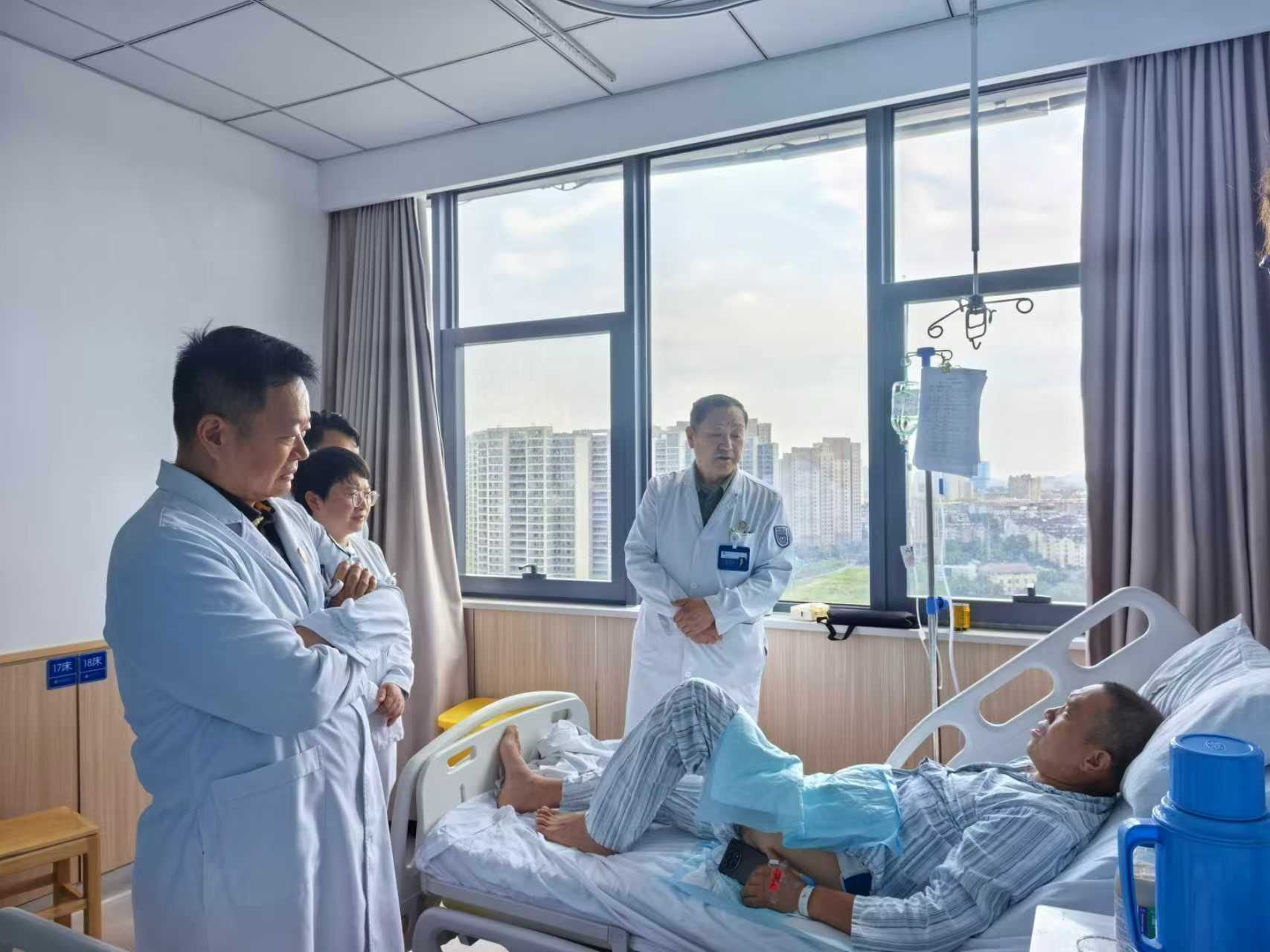
Doctors on morning rounds, gathering at the patient’s bedside, a quiet testament to survival after the night’s battle.
Note: This article is based on a real medical case. To protect patient privacy, names have been changed.
Xiang Xie is a writer and former physician.






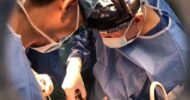











![Rebuilding the backbone of health care [PODCAST]](https://kevinmd.com/wp-content/uploads/Design-3-190x100.jpg)

![A neurosurgeon’s fight with the state medical board [PODCAST]](https://kevinmd.com/wp-content/uploads/Design-1-190x100.jpg)
![An attorney’s guide to your first physician contract [PODCAST]](https://kevinmd.com/wp-content/uploads/Design-2-190x100.jpg)

